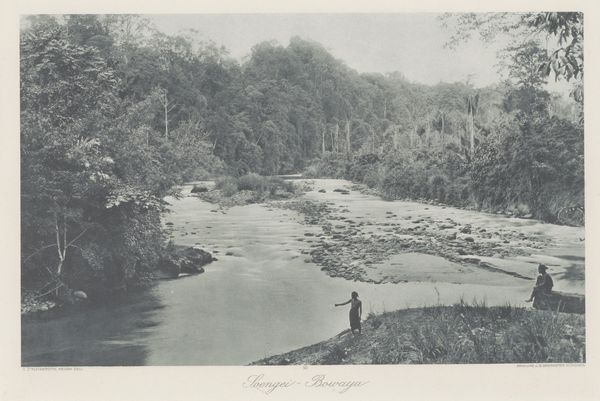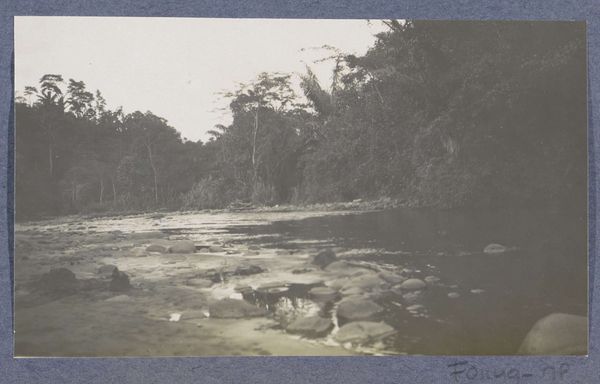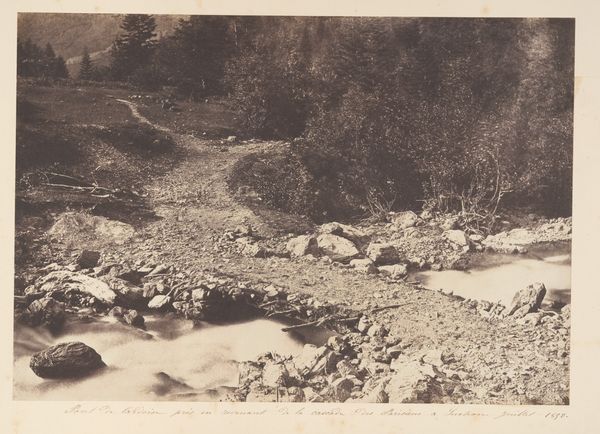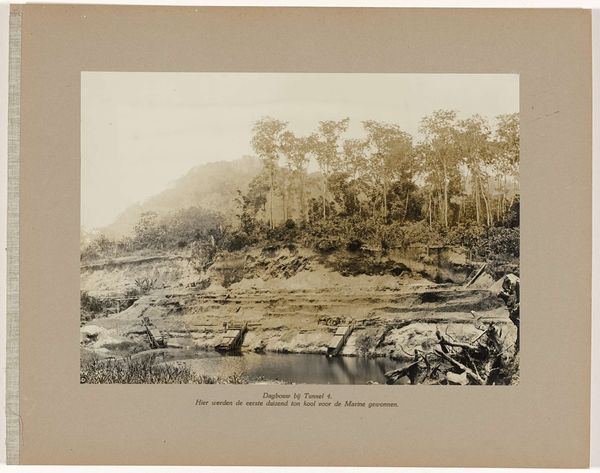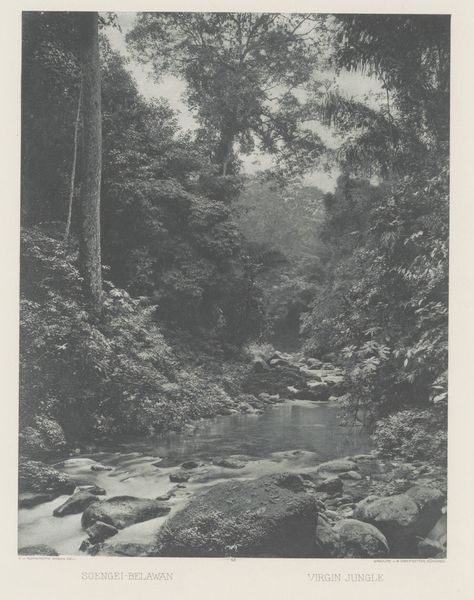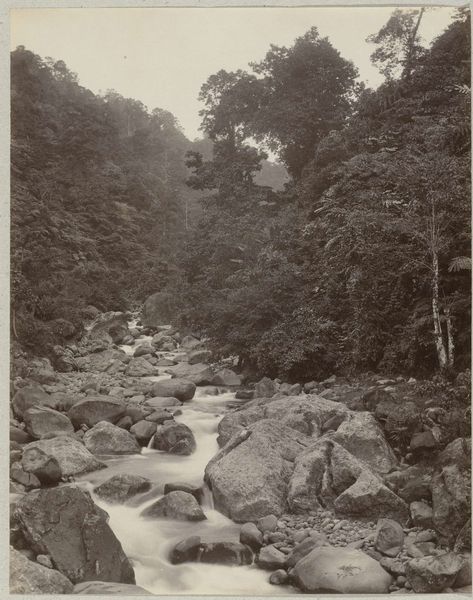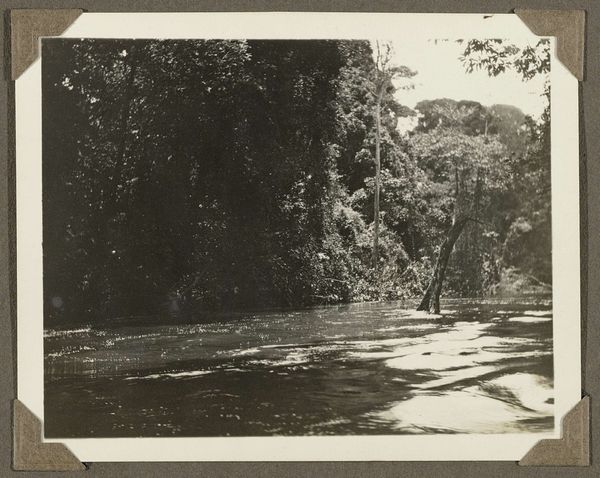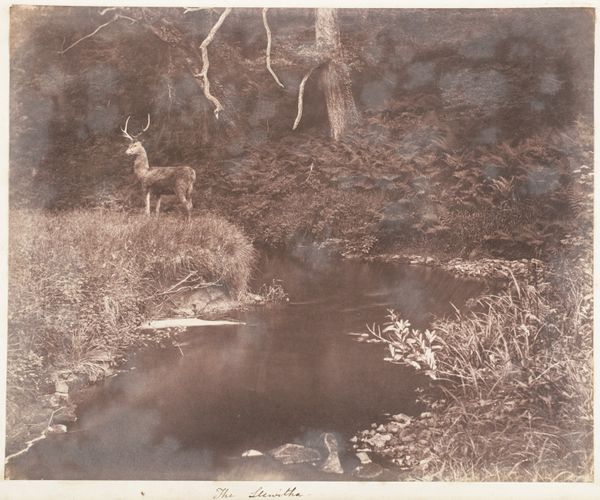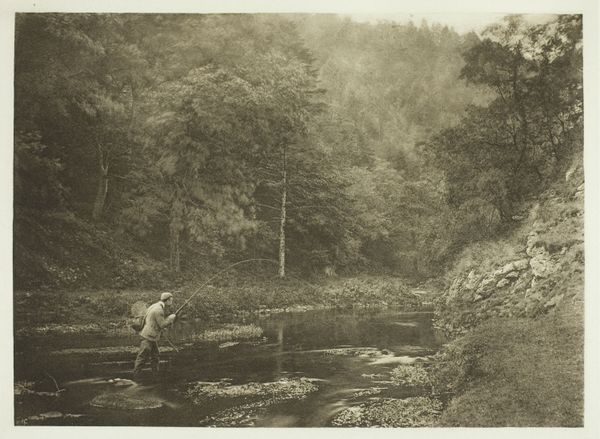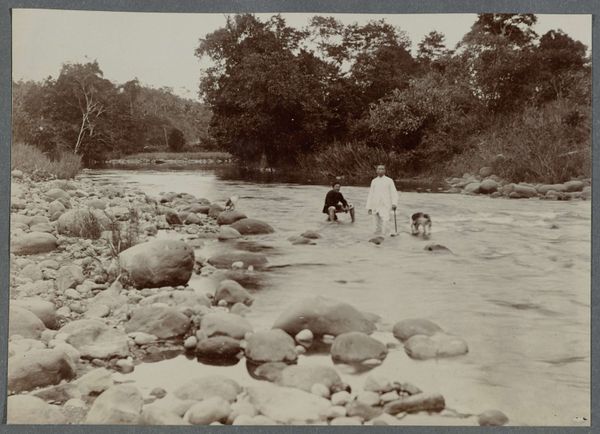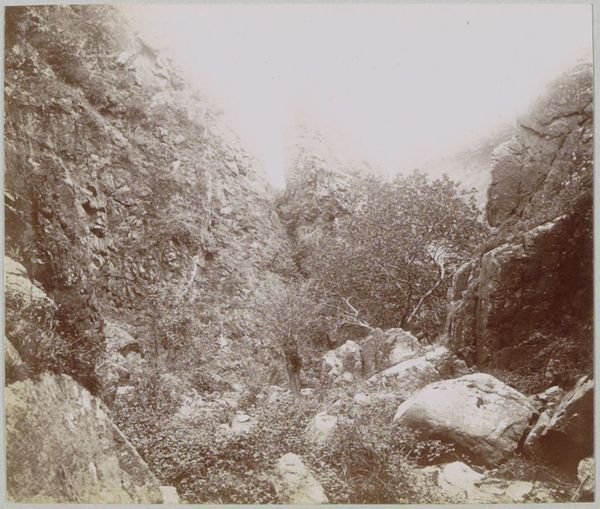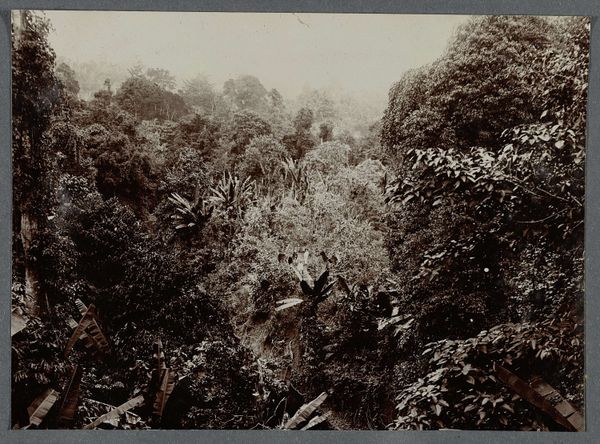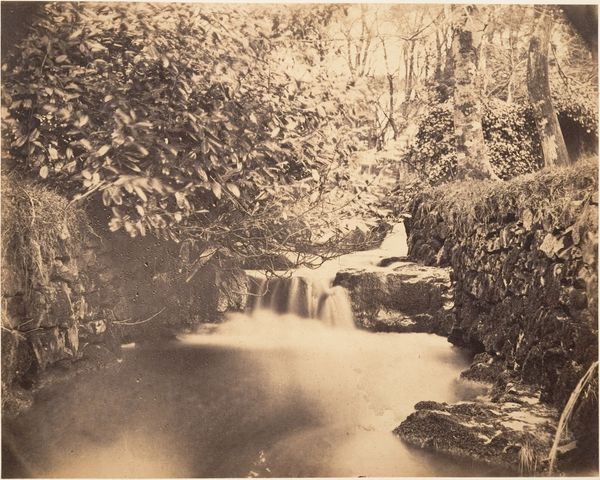
photography, gelatin-silver-print
#
portrait
#
landscape
#
photography
#
gelatin-silver-print
#
watercolor
#
realism
Dimensions: height 85 mm, width 113 mm
Copyright: Rijks Museum: Open Domain
Curator: This is a gelatin silver print dating from between 1905 and 1910, by Jacob Evert Wesenhagen. The work is titled "Opzichter Overloon aan de Sarakreek," or "Supervisor Overloon at the Sarakreek". It resides here at the Rijksmuseum. Editor: My first thought is of the subdued tones. It's a monochrome landscape, almost dreamlike, with this lone figure perched on a rock in what appears to be a swiftly flowing river. There's a real contrast in texture—the smooth water against the rough, dark rocks. Curator: Wesenhagen's use of the gelatin silver process allows for sharp detail but also interesting tonal variation. He wasn’t necessarily concerned with artistic manipulation in the darkroom. He documented through photography with the latest advancements available. Editor: Precisely. I’m also thinking about that figure’s position within the landscape. Given the title, it appears that the photo emphasizes colonial authority imposing itself in a wild environment, almost defiant, you know? A sort of power dynamic played out through the visual hierarchy. Curator: Certainly. We must recognize that photography at this time was instrumental as a tool for colonial administration. These images both reflect and actively create specific representations, and perhaps misrepresentations, of a place and its relationship with the colonizers. How were they consuming photographic materials as a measure of "progress"? What does this photograph reveal about environmental control? Editor: Yes, that interplay between documentation and ideological framing is key here. Think about the relationship to land and power implicit in a simple photograph! What systems does this work implicate? Curator: We might further consider who had access to photographic equipment and training during that period, limiting whose narratives got captured and circulated. Editor: This photograph encourages questions beyond the immediate subject matter and composition, pushing us to confront difficult historical and ethical considerations. Curator: It pushes us to evaluate both labor and materials that contributed to the colonial gaze, even in what looks like a quiet photograph of nature. Editor: And the subtle violence embedded in seemingly neutral depictions of land and labor. Curator: Indeed, it underscores how images can be active agents in shaping our understanding of history and power.
Comments
No comments
Be the first to comment and join the conversation on the ultimate creative platform.
